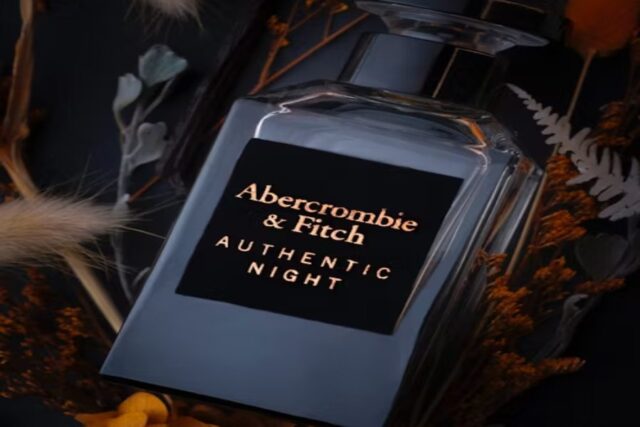When it comes to fast fashion, Abercrombie & Fitch is a brand that often stirs debate. Known for its trendy, youthful clothing and signature scents, Abercrombie has become a staple for many fashion-conscious individuals. But is Abercrombie a fast fashion brand, or does it differ from other companies that promote rapid turnover of cheap, mass-produced clothing? This article will delve into the key aspects of Abercrombie & Fitch’s business model, its sustainability practices, and how it compares to other fast fashion giants. By the end, you’ll have a clear understanding of where Abercrombie stands in the fast fashion industry.
Is Abercrombie fast fashion?
Yes, Abercrombie & Fitch is considered part of the fast fashion industry. It designs, produces, and sells trendy, low-cost clothing with a quick turnaround, which is a hallmark of fast fashion. However, it distinguishes itself by occasionally offering higher-quality items and focusing on a specific market of affluent young adults.
Abercrombie and Fast Fashion or Premium Trendsetter
Abercrombie & Fitch, established initially as a high-end outdoor retailer, has evolved over the years to appeal to a younger, trend-conscious audience. This shift allowed the brand to tap into the growing demand for stylish yet affordable clothing.
In this section, we’ll define what qualifies a brand as “fast fashion” and examine if Abercrombie meets those criteria. A key factor to consider is the brand’s quick turnaround of seasonal styles, which mirrors the fast fashion model. Abercrombie’s approach to keeping prices low while maintaining trendy designs will also be explored, including their sourcing strategies and manufacturing processes.
We’ll compare Abercrombie’s price points with competitors like H&M, Zara, and Forever 21, investigating whether Abercrombie offers more premium options or stays in line with typical fast fashion pricing. Finally, we’ll examine Abercrombie’s sustainability efforts, a growing concern in the fashion industry. This section will explore how the brand addresses environmental issues and transparency in its production practices, in contrast to its fast fashion counterparts.
Abercrombie’s Market Target & Consumer Behavior
Abercrombie’s market positioning focuses on attracting a young, affluent demographic. This section will delve into the brand’s consumer behavior and how it appeals to its target audience.
- Who Buys Abercrombie?: Abercrombie primarily caters to young adults, typically aged 18-35, with a higher disposable income. The brand appeals to those seeking trendy, stylish, yet affordable clothing. Its consumer base values fashion-forward designs and a lifestyle-driven brand image.
- Brand Loyalty vs. Fast Fashion: Unlike other fast fashion brands, Abercrombie has cultivated a loyal customer base. This is achieved through exclusive product releases, a premium shopping experience, and aligning with a particular lifestyle. Abercrombie’s focus on quality and brand identity sets it apart from the high-turnover nature of traditional fast fashion competitors.
- The Role of Trendy Advertising: Abercrombie employs exclusive, aspirational marketing tactics, often creating a sense of urgency around product launches. This strategy mimics fast fashion models, where limited-time offers and trends drive consumers to purchase quickly before items sell out.
Sustainability in Abercrombie’s Supply Chain
Abercrombie & Fitch, like many fashion brands, faces growing pressure to adopt more sustainable practices. As fast fashion continues to be scrutinized for its environmental impact, Abercrombie’s efforts to reduce its footprint are increasingly important.
Environmental Impact and Initiatives
While Abercrombie & Fitch has made strides in sustainability, such as using more sustainable materials and reducing waste, it still lags behind some of its competitors in implementing comprehensive eco-friendly measures. Their environmental initiatives include using organic cotton and offering more sustainable product lines, but much remains to be done in terms of reducing carbon emissions and water usage across their supply chain.
Transparency and Ethical Production
The brand’s transparency around its manufacturing processes has been another point of concern. Although Abercrombie has started to share more information about its sourcing and labor conditions, complete transparency is still lacking.
Tracking Sustainability Goals
As consumers become more conscious of environmental issues, tools like a Date Time Calculator can assist in tracking sustainability goals and milestones, helping to ensure that brands like Abercrombie follow through on their commitments to change.
How Abercrombie Compares to Traditional Fast Fashion Brands?
In this section, we will compare Abercrombie & Fitch with other leading fast fashion brands across various essential factors, such as production speed, pricing, and consumer perception.
- Production Speed: Abercrombie’s production turnaround is relatively fast, but it does not match the lightning-speed turnaround seen with brands like Zara. While Abercrombie quickly adapts to seasonal trends, Zara is known for its ability to design, produce, and deliver new collections within weeks, which allows it to stay ahead of the competition in the fast fashion space.
- Price vs. Quality: Abercrombie tends to offer a higher price point compared to traditional fast fashion brands like H&M or Forever 21. While its pricing is often higher, it offers a higher-quality product and a distinct brand identity. Abercrombie focuses on providing better quality materials and more durable pieces, which may appeal to customers who value longevity over the disposable nature of fast fashion.
- Consumer Perception: Compared to other fast fashion brands, Abercrombie is often viewed as a more aspirational brand. It has managed to maintain a certain level of exclusivity, often associated with a more upscale image. However, in terms of sustainability and ethical practices, it still faces criticism, as many consumers expect more transparency and responsibility from all brands, including Abercrombie.
The Future of Abercrombie in the Fast Fashion World
As consumer demand for ethical fashion continues to grow, Abercrombie & Fitch faces the challenge of evolving to meet these changing expectations. The brand must decide whether to continue down its traditional fast fashion path or shift toward more sustainable practices. To stay competitive, Abercrombie will need to integrate sustainability into its core business model, focusing on reducing its environmental impact, sourcing eco-friendly materials, and improving transparency in its supply chain.
Consumer Trends are also playing a significant role in shaping Abercrombie’s future. With increasing awareness around issues like climate change, labor rights, and waste reduction, consumers are placing higher value on brands that align with their social and environmental values. Abercrombie must adapt to these shifts by offering more sustainable products, embracing ethical production practices, and addressing the growing demand for transparency. Failure to do so could risk the brand’s relevance in an increasingly eco-conscious market.
Conclusion
In conclusion, Abercrombie & Fitch operates at the crossroads of fast fashion and traditional retail. While it shares key traits of fast fashion, such as rapid turnover of trendy clothing, it distinguishes itself with higher pricing, targeted marketing, and occasional focus on premium-quality products.
As sustainability becomes a growing priority for consumers, Abercrombie faces pressure to adapt to these expectations. The brand’s ability to balance trendiness with ethical practices and transparency will be crucial in maintaining its relevance. The future of Abercrombie in the fast fashion industry depends on how effectively it embraces sustainability while continuing to meet the demands of its loyal customer base.
FAQ’s
Is Abercrombie considered fast fashion?
Yes, Abercrombie & Fitch is considered a fast fashion brand due to its quick production cycles and focus on providing affordable, trendy clothing that follows the latest fashion trends, catering to a fast-paced market.
What makes Abercrombie different from other fast fashion brands?
Abercrombie differentiates itself with premium pricing and an exclusive marketing approach, targeting affluent young adults. It focuses on offering higher-quality products compared to traditional fast fashion brands, creating a more aspirational image.
Does Abercrombie have sustainable practices?
Although Abercrombie has started making strides toward sustainability by using eco-friendly materials, its efforts still lag behind industry leaders in the fast fashion space. The brand is working on improving its sustainability, but there’s much more to be done.
How does Abercrombie maintain its appeal?
Abercrombie maintains its appeal through exclusive marketing campaigns, high-quality products, and a focus on trendy designs. Its ability to create a lifestyle brand that resonates with its target demographic helps keep customers engaged and loyal.
Is Abercrombie still a relevant brand in the fast fashion industry?
Yes, Abercrombie remains relevant, but its future success will depend on how well it adapts to the growing demand for sustainability. The brand must balance quick trends with more responsible practices to stay competitive and attract conscious consumers.














